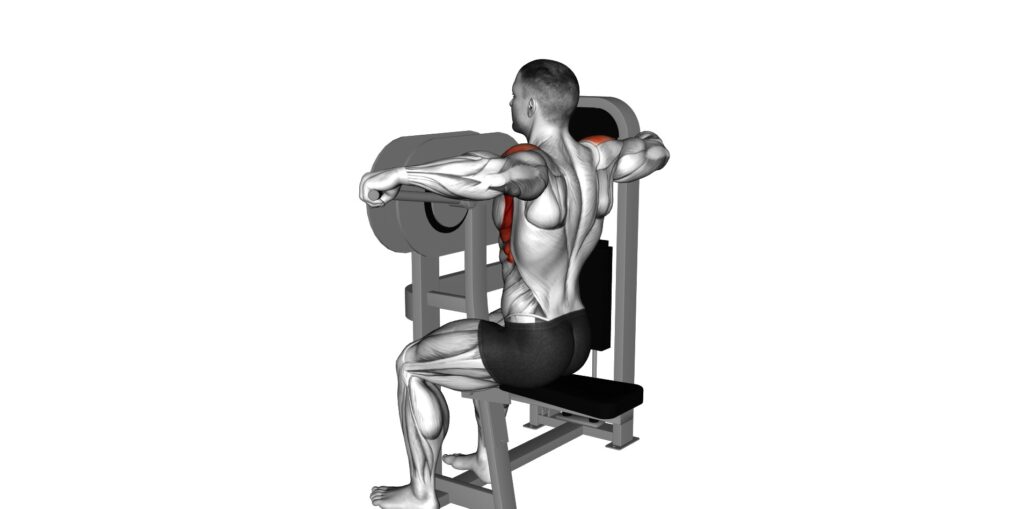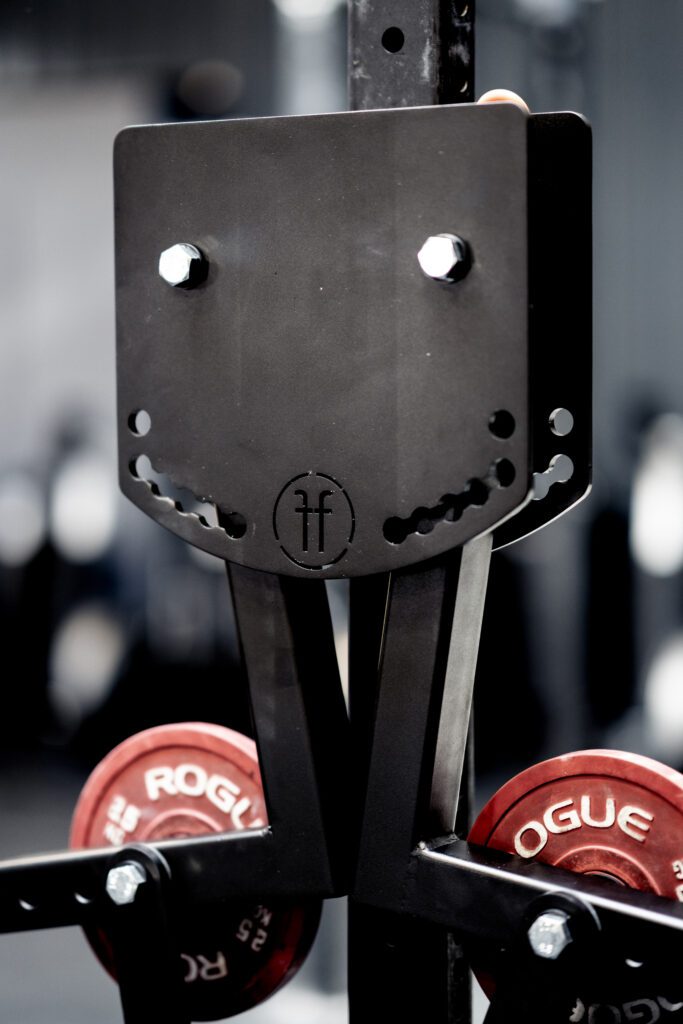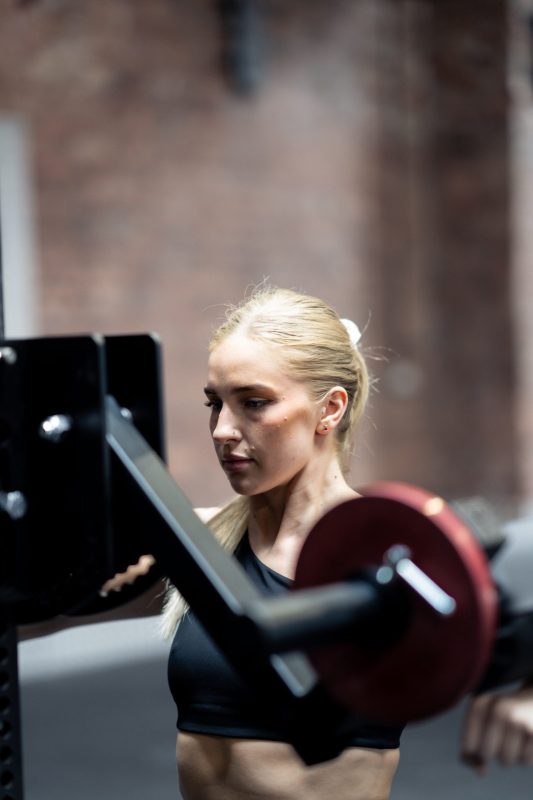Choosing the Right Lateral Raise Rack Attachment: Tips and Recommendations

Share This Post
Whether you’re fitting out a home gym or upgrading a commercial fitness centre, understanding the role of lateral raises for shoulders’ development is crucial. This targeted movement is essential for building the desired ‘boulder shoulders,’ contributing to a well-rounded aesthetics physique and upper body strength.
However, not all lateral raise attachments are created equal, and the options can be overwhelming. In this blog, we’ll break down the specifics of what makes the Forte Fitness lateral raise rack attachment suitable for your workout and gym setup.
The ideal lateral raise attachment is more than just its lifting tool; it’s essential to also consider adjustability to accommodate different body types, compatibility with your existing rack, and the additional benefits it brings to your exercise routine.
By integrating the right lateral raise attachment into your workout, you can ensure that each rep is performed with optimal resistance and in the correct range of motion—two factors critical for muscle gain and preventing injury. With our expert tips and thoughtful recommendations, you’ll be equipped to make an informed decision that aligns with your fitness goals and the equipment you already have.
Why Use The Lateral Raise Attachments?

Let’s delve deeper into what these attachments are and the significant advantages they bring to your workouts. A lateral raise attachment is an add-on to your existing gym equipment that allows you to perform lateral raises – a type of exercise that targets the muscles on the side of the shoulder, known as the lateral deltoids.
The Benefits of Lateral Raise Attachments
Lateral raises are great for isolating the delts. These small muscles in the shoulders can be challenging to engage during compound exercises. By focusing on this specific muscle group, you can develop shoulder width and thickness, leading to more definition, something that many gym-goers and bodybuilders strive to achieve. Lateral raise attachments and tools come in various forms—some are designed for use with free weights, while others may be plate-loaded or cable-based systems designed for more controlled movements.
The benefit of using these specialised attachments is significantly higher than traditional ways of performing this movement. They allow for a full range of motion, which is crucial for complete muscle development and functional mobility. Moreover, by using an attachment that’s designed for lateral raises, you ensure that the load is distributed evenly across the shoulder, better isolating muscle engagement and twitch, as well as reducing the risk of strain and injury.
The Role of Attachments in Effective Shoulder Workouts
Incorporating the right attachment into your shoulder workout routine serves multiple roles. First, it ensures consistency in your exercise form, which is vital for progressive overload and hypertrophy. Consistent form means you’re less likely to ‘cheat’ the movement with momentum, thereby making each rep count more towards muscle growth and strength.
These attachments offer the flexibility to adjust the weight easily, accommodating both beginners who might start with lighter loads and seasoned athletes who require heavier resistance. This adaptability makes lateral raise attachments a staple for a wide range of users with varying fitness levels.
The Essentials of a Quality Lateral Raise Attachment
When it comes to selecting a lateral raise attachment, the quality of materials and construction should be your top priority. A high-quality gym attachment is pivotal for durability, safety, and ensuring that it can withstand the rigours of frequent use. Look for attachments made from robust, heavy-duty steel that promises longevity and can handle the load without compromising on performance.
When examining design features, consider attachments that offer adjustable settings to accommodate various arm lengths and user heights. This adjustability ensures that every user can achieve the full range of motion necessary for effective muscle engagement. Additionally, ergonomic handles and padded rests can enhance comfort, allowing you to focus on the muscle being worked rather than discomfort in your hands or other contact points.

Using the right Attachment will Maximise Shoulder Load and Press Techniques
The type of attachment you choose for lateral raises can significantly impact how the load is applied to the deltoids during the press movement. For instance, a well-designed lateral raise attachment will ensure that the force vector targets the deltoid muscles optimally, enhancing the efficiency of the exercise and contributing to better shoulder development.
To maximise workout efficiency and ensure safety, it’s crucial to employ proper techniques that complement the specific attributes of your chosen attachment. With plate-loaded attachments, for instance, you can precisely manage incremental weight increases, which is beneficial for progressive strength training. This precision allows for a controlled increase in shoulder load, challenging the deltoids without overburdening them.
Additionally, effective press techniques often involve maintaining a slight bend in the elbows during the lift to prevent undue stress on the joints. Properly performed lateral raises should engage the entire upper body without swinging or using momentum to lift the weight. Instead, focus on a slow, controlled movement with a deliberate pause at the top to maximise tension on the deltoid muscles. This method not only stimulates muscle growth but also reinforces the stabilising muscles that support shoulder health and function.
Understanding the nuances of how to correctly perform exercises with your attachment will lead to more effective sessions, helping you to sculpt and strengthen the upper body with each workout safely.
Choosing Between Plate Loaded ATTACHMENT and Cable Lateral RaiseS

When it comes to selecting the right equipment for lateral raises, the decision between plate-loaded and cable attachments is a common dilemma. Each has its pros and cons, and the best choice often depends on the specific needs and preferences of the user.
Plate-loaded attachments are praised for their straightforward design and the ease with which they can replicate the classic dumbbell lateral raise. They are ideal for those who appreciate the simplicity of adding and removing plates to adjust weight easily. Furthermore, the resistance curve with plate-loaded equipment is fixed and ideal to provide consistent tension throughout the entire range of motion.
Cable attachments offer a similar resistance to the lift. While cables lateral raises are often more popular in commercial gyms, they can lead to too much momentum while performing the movement, resulting in less efficient muscle engagement and isolation. Cable machines also require a fixed setup that may not be as readily available or convenient as plate-loaded stations, which can be used with a simple rack and bench setup. Additionally, plate-loaded systems often have a lower cost and require less maintenance than cable machines, making them a more user and budget -friendly option for home gyms.
Ultimately, the choice may come down to personal goals and the desired feel of the exercise. Those looking for an attachment that offers the familiarity of free weight movements and easy adjustability might prefer plate-loaded options.
DO YOU HAVE the Right Rack for Your Lateral Raise Attachment?
Choosing the right rack attachments for your gym is a decision that can impact the effectiveness and usability of your workouts. When it comes to lateral raise attachments, compatibility is key. The rack you own should accommodate the attachments you intend to use, allowing for a smooth transition between different exercises.
To ensure compatibility, first, verify the specifications of both your rack and the lateral raise attachment. The size, shape, and design of the rack’s upright posts or frames must match the attachment’s requirements. Some racks come with standard connections and bolts for a wide range of attachments, while others may be limited to specific brands or types.
Consider the type of gym you are equipping. Commercial gyms require rack attachments that can withstand heavy usage and have a level of versatility to cater to various workout routines and athletes’ needs. On the other hand, a home gym might prioritise space-saving designs and the ability to quickly and easily adjust configurations.
Overall build and sturdiness are also crucial. A robust attachment made from high-grade steel not only supports greater weight loads but also ensures safety and longevity. Ensure your rack has a solid base that doesn’t wobble, which can be a critical factor when performing lateral raises that require stability.
When assessing fitness equipment, it’s also wise to think about the future. Will your rack allow for additional attachments or expansions as your fitness needs grow? Investing in equipment that can evolve with your gym can save money and space in the long run.
By considering these factors – compatibility, sturdiness, versatility, and future needs – you can select equipment that not only complements your lateral raise attachment but also enhances the overall functionality of your gym setup. This foresight ensures that you provide a comprehensive fitness environment, whether for individual use at home or for multiple users in a commercial setting.
Conclusion
We have covered the essential knowledge and considerations for choosing the right lateral raise rack attachment to help you achieve strong and ‘boulder shoulders.’ From understanding the benefits and roles of various attachments, to selecting the appropriate rack equipment for your gym – each step is pivotal in crafting a shoulder workout that fosters hypertrophy and functional strength. Remember, the isolation exercise provided by a lateral raise is unparalleled in its ability to sculpt the shoulder muscles and enhance your physique.
Ready to take your shoulder workouts to the next level?
Forte-Fitness has got you covered with a high quality UK made lateral raise rack attachment for both home and commercial gyms. Whether you’re just getting started on your fitness journey or looking to help others get there, we have the tools you’ll need to build strength and muscle safely and effectively.

3 comments on “Choosing the Right Lateral Raise Rack Attachment: Tips and Recommendations”
Sweet blog guys!
Great info and a cool attachment for gyms that are mostly squat rack/rig style rather than pin loaded machines.
What is the maximum weight capacity?
Great blog!
More To Explore
The Ultimate Guide to Skipping: Unlocking Strength, Balance, and Stress Relief with a flow rope
Flow rope training is a dynamic workout method that involves using a thick braided rope to create rhythmic, fluid movements. Unlike traditional jump rope exercises, a flow rope workout doesn’t necessarily require jumping. Instead, you move with the rope rather than against it, making it an excellent workout for balance, coordination, and relaxation. Popular among
The Benefits of Training with a Weighted Vest: Boost Your Strength and Endurance
Integrating a weighted vest into workout routines is an increasingly popular fitness strategy aimed at enhancing the effectiveness of various exercises. This comprehensive guide examines how weighted vests can significantly boost physical fitness by increasing the intensity of workouts, details the potential risks, and offers insights into maximising benefits while minimising potential drawbacks. What is